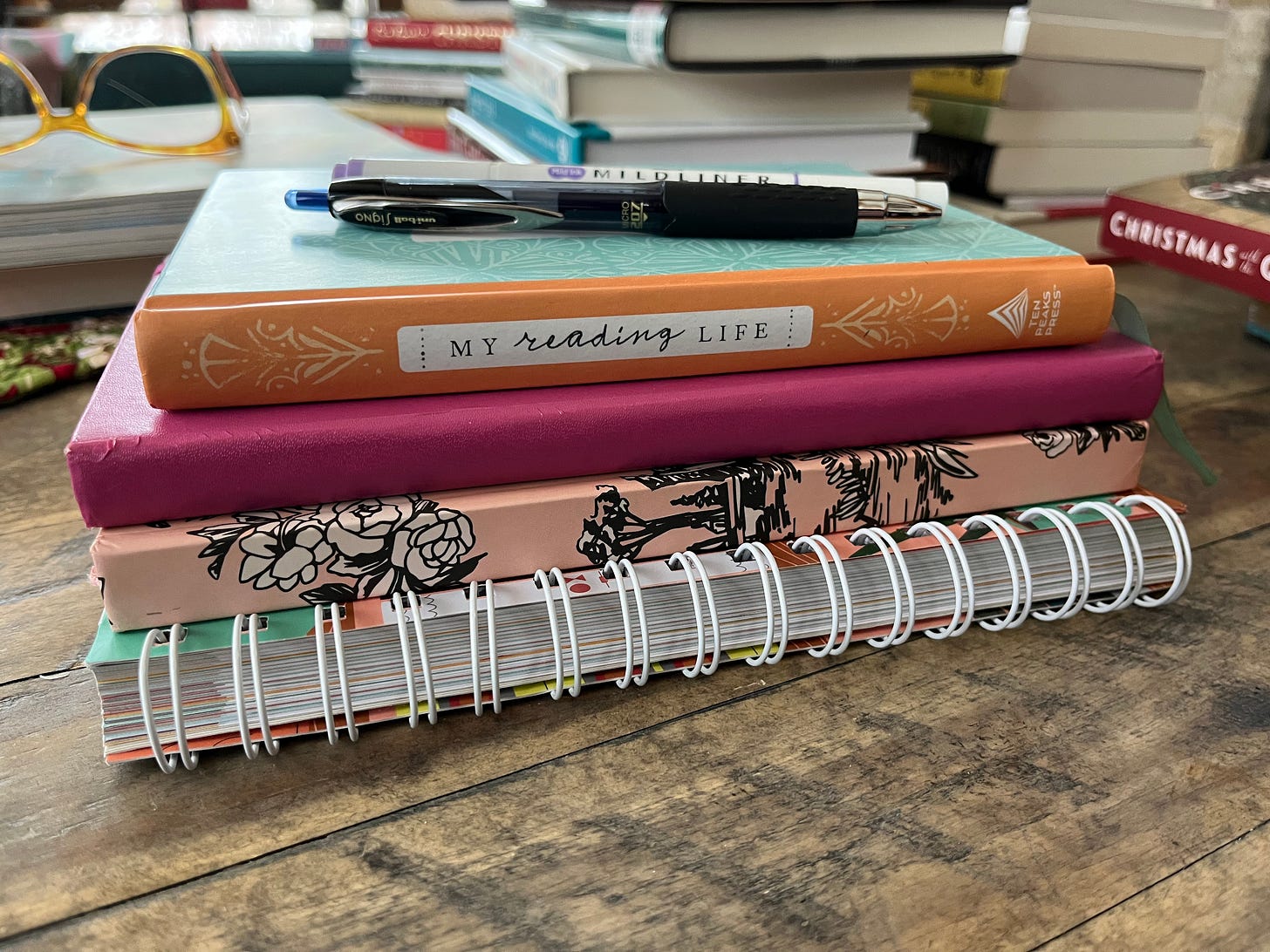7 Tools for an Intentional Reading Life
I spent several hours yesterday planning my nonfiction reading for 2025. It was—oddly, I admit—exhilarating. I mean, this is true book nerd stuff. Of course, you can read without any of the trappings I’m going to mention here, but I find these tools help me to be more intentional about absorbing what I’m reading.
A blank weekly planner. Any planner will do, but I tend to prefer something bookish. his year, I’m using the ALA’s undated planner; it’s appropriately literary and contains reviews of 52 award-winning books. I plan my reading each week, day by day, rotating my categories.
Some kind of categorical outline tool. I used the Scholé Sisters’ 5x5 reading planner, but I planned my reading across seven categories instead of five. I have this printed out and tucked into the front pocket of my planner so I can refer to it throughout the year.
A blank journal to use as a commonplace book. Mine is a lined hardcover Moleskine (divided bullet-journal style into categories). I use this for recording quotes I want to keep close.
A blank journal to use as a word journal. For recording new-to-me words and their definitions.
Writing utensils you love to use. I like Uniball Signo Micro pens for marginalia and Zebra Mildliners because they don’t bleed.
Book darts. I place these where I want to return to a quote and add it to my commonplace book later or on words I want to look up and add to my word journal; I complete these tasks after reading so as not to disrupt my flow.
A book tracking journal or tool. I use both Anne Bogel’s My Reading Life and Goodreads to track what I read and make notes.
My kids have their own versions of these tools, and I don’t force them to use them (that would ruin the enjoyment), but I do encourage it. I started keeping a commonplace book when I was in middle school, and I love looking back at what caught my attention then.
What are your favorite reading tools?


